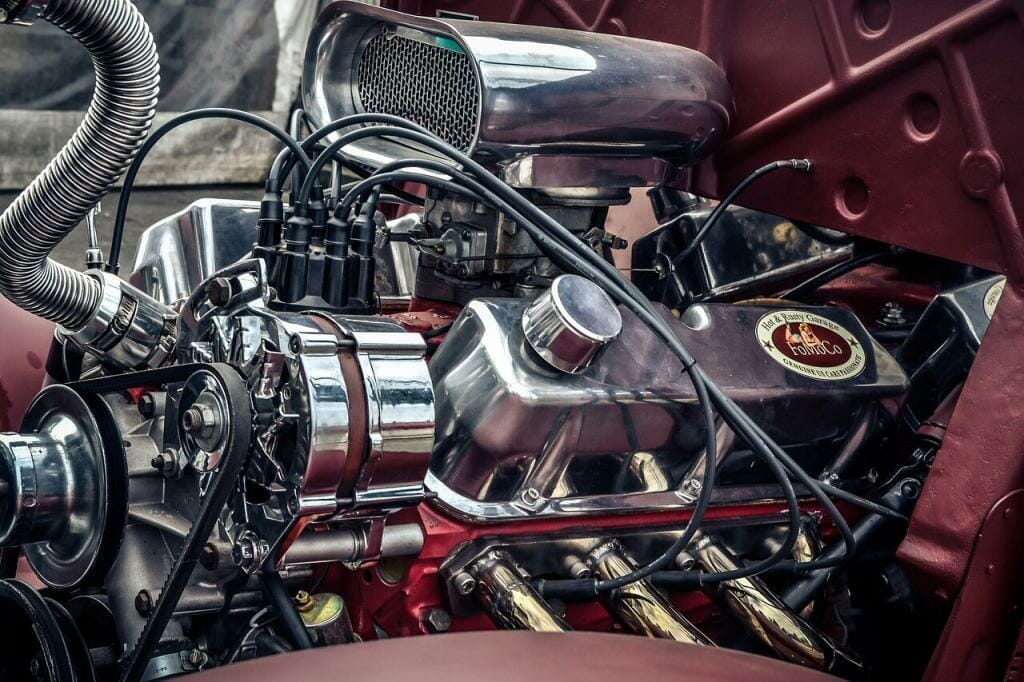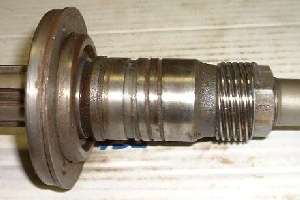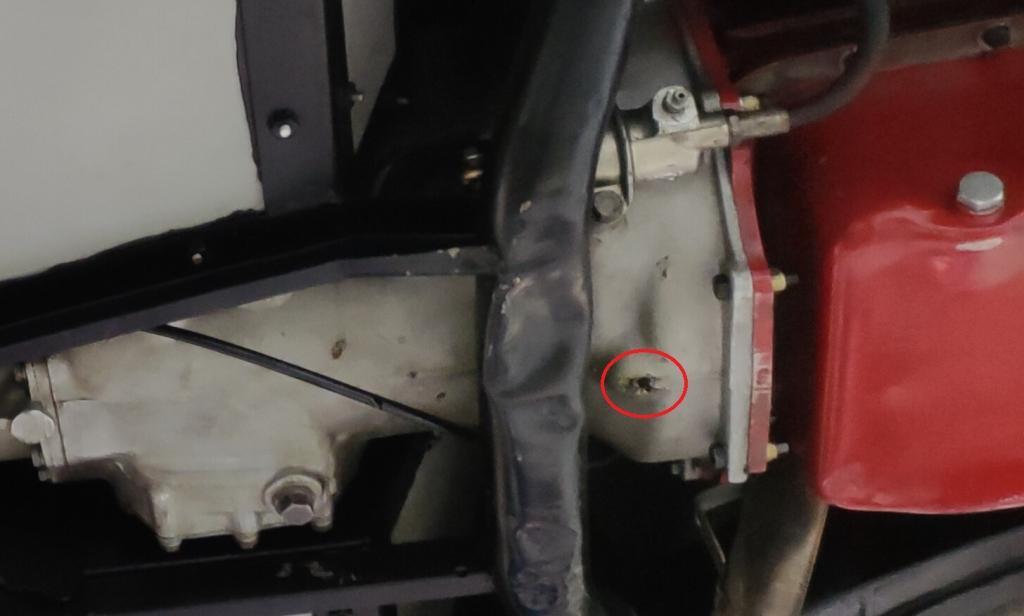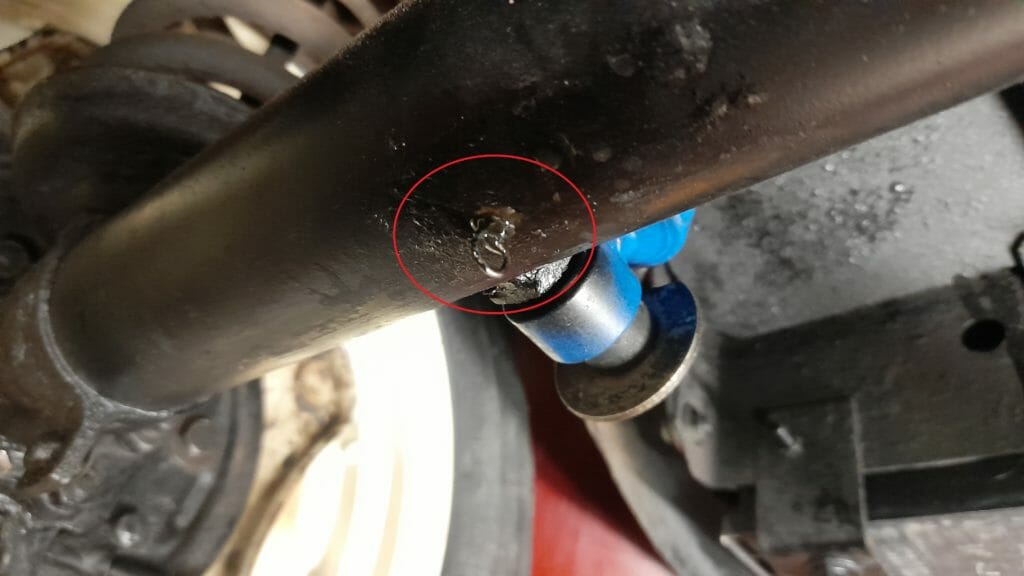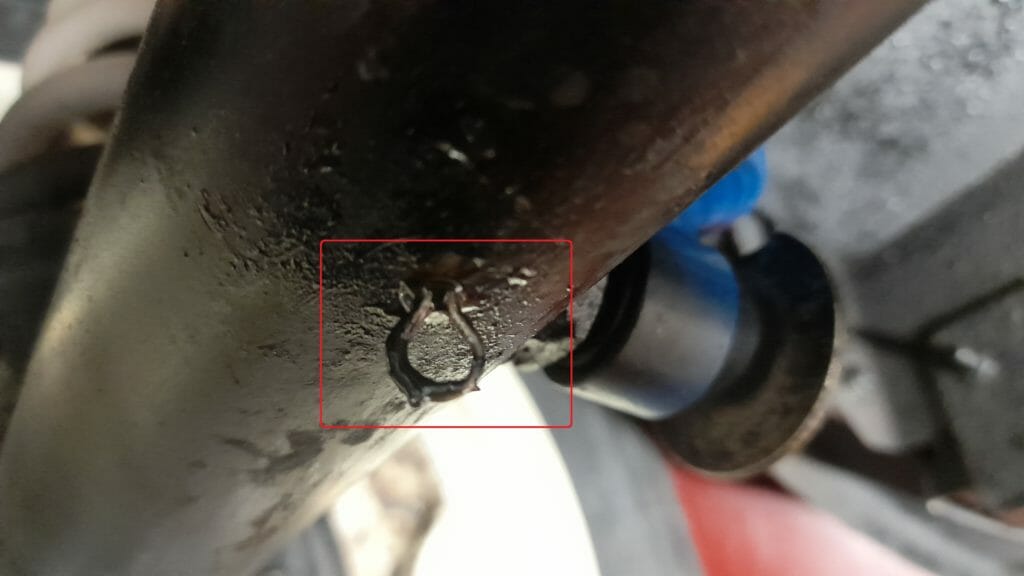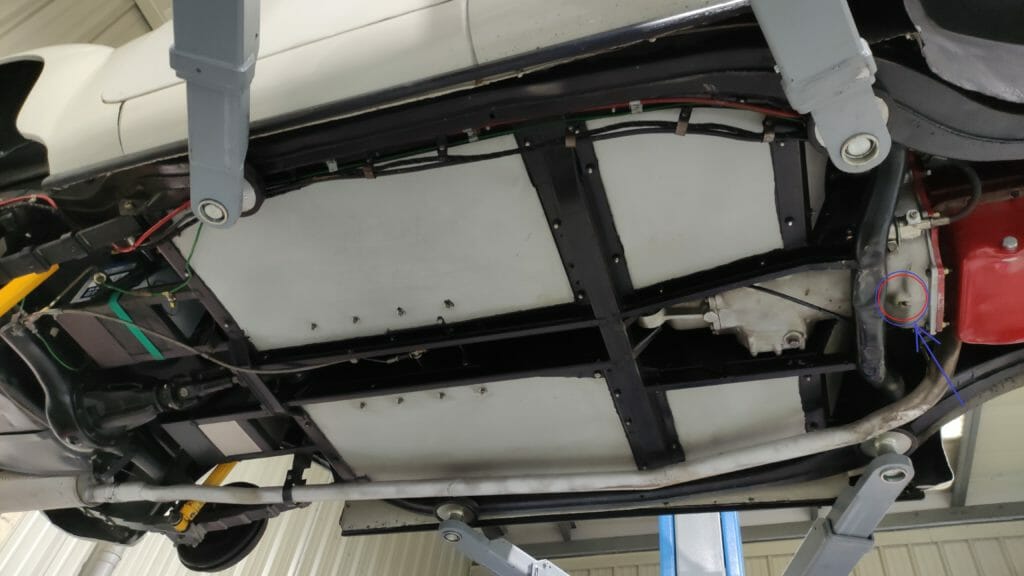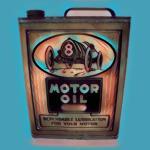Share in:
This is a situation as frequent as undesirable in classic cars (actually, in non-classic cars, when they are a certain number of years old, also). These oil leaks are called in several ways, with more or less degree of euphemism, but at the end of the day, they drive to the same thing:
- Oil leak
- Little oil drops
- Oozing oil
- Sweat oil
- ..
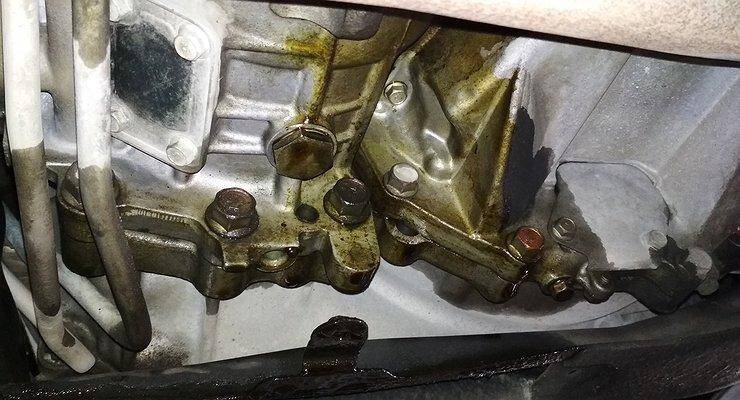
Initial consideration. Important:
Here I consider it important to precise something: I am talking about external and slight losses, which, in the case of many old cars, are inherent to the design of the vehicle itself. I am only talking about those types of losses and not other ones. Large leaks, or internal leaks due to problems of sealing around rings, cylinders, pistons, issues in valve seals, cylinder head gasket and any leak that compromises the proper functioning of the engine, this is ANOTHER THING and if these issues happen, it requires the intervention of a qualified professional.
These external oil leaks that I mention here – even if they are slight – have two consequences:
- They are smearing wherever the car parks or passes by.
- They can give you problems in the ITV (technical inspection cerification) at least in Spain.
The first consequence has a direct interpretation: we like classic cars and historic cars, we are passionate about automobiles. In general, we like mechanics and “tinkering”, but we don’t like to mess up or polluting the environment. No need to mention that industrial and automotive oils are one of the most polluting wastes that exist.
As for the second one, the problem is that it has an interpretable reading: In the MOT inspection, “oil leaks WITHOUT dripping” are a minor fault, but “oil leaks WITH dripping” is considered a major fault (at least in Spain) and generates an NON-PASSED INSPECTION. And the discussion lies precisely in what is understood as “drip” and what is understood as “non-drip”. In reality, any leakage of a fluid implies dripping (unless the fluid solidifies or gels spontaneously, but this is not the case with oil, at least not at the “ordinary” temperatures of our climate). So it’s all a matter of “how soon” the trickle down occurs. It is therefore at the discretion of the MOT technician to determine whether we are dealing with a “drip YES” or “drip NO”. And this, in the MOT inspection, in many occasions, is usually a source of debate/dispute or at least in an uncertainty about the result of the report.
What can I do to resolve this oil leak?
This is where the problem often comes: The MOT inspector technician will probably explain to you where the leak is coming from and you will probably hear a phrase such as “.you would have to change the seal/gasket of XYZ …” -this is usually most of cases-. And here, if you want to solve the problem, you can find yourself – in general – with several options, which finally will drive you to one of two possible situations: The replacement of the responsible part is feasible or not:
Situation 1: replacement of the sealing element (gasket, seal, plug, etc.) is feasible.
-
- First option: it is a gasket(external, I insist once again, I am NOT talking -for example- about a cylinder head gasket) and the replacement is feasible. A flat gasket, even if not commercially available, is easy to make, and in most cases is usually replaceable with reasonable effort. It is true that in some cases, such as the oil pan or sump gasket, it is usually necessary to lift the engine block because the front or rear axle (depending on the location of the engine block) prevents the sump from being removed. But in any case, we are talking about assumable effort.
- Second option: It’s a seal ring and you can change it with reasonable effort. Spare parts are available and labor is affordable in terms of time and effort. Some of them may require you to remove parts that generate more work, such as a crankshaft pulley, or a water pump that prevents you from getting to the oil seal, but again, we talk about something that can be addressed at a moderate cost.
Situation 2: The replacement of the sealing element is unaffordable or of an unaffordable cost.
-
- The oil seal replacement is not feasible, either for one of the following reasons:
- Not available on the market
- You cannot afford (economical labor cost effort) to change it.
- It never existed: that model simply did not have a seal. It is not present in the original car design.
- The oil seal replacement is not feasible, either for one of the following reasons:
NOTE: What I have presented here so far is a generalization and obviously there may be many other particular cases, but the reality is that in most cases, the situation will be very similar to one of the ones described above.
I am in situation 1: I can replace the part at an affordable cost.
If you are lucky enough to be in situation 1, my advice is not to even think about it: Go for the direct replacement of the sealing element: No intermediate repairs, no “miracle” additives that promise to restore the sealing where there were leaks before. I have never seen anyone that worked.
If you replace the part, it is true that you will spend hours and/or money (more hours or more money depending on how much you do yourself or how much you ask a professional to do it), but it will have been an assured investment. If you also consider the fact that you are doing it with a classic car, and therefore the few kilometers it is likely to do per year, it will probably be the last time you replace that part. And the problem will belong to the past.
I am in situation 2: There is no sealing element in that part (or there is but it is not affordable for me).
You may also find that even if a replacement is available on the market, the cost of replacement is unaffordable for you at the time. These parts use to be inexpensive, usually costing no more than few euros/dollars/pounds/,.., but some of them may take maybe 10 hours of labor to be replaced (and may need special tools such as extractors, press, etc.).
And finally, it may be that your car simply does not have any kind of sealing element at the oil leak point. This situation happens in many older cars and for some types/brands: it’s a known situation. In the same way that many old vehicles (I am talking about 1960 backwards) did not have fuses in the electrical installation, they don’t also have any oil ring seals. They did not exist at that time when car was manufactured. So don’t look for them: there aren’t any.
Really? Isn't there any kind of seal ring?
Really. Many of the old cars did not have any at the output of the different shafts (crankshaft, cam, secondary shafts, etc.).
In reality, even when a seal ring exists as a engine part for many years and it may look simple, it’s not at all a simple element to manufacture or design.
A seal ring is a sealing element (let’s colloquially call it now a “gasket”), in the form of a ring (or sometimes a cylinder), which is installed in an orifice in a fluid-filled recipient, an orifice through which a moving part (a rotating shaft or an oscillating axe, as in the case of valves) “comes out”. And its mission, as the name suggests, is to “retain” or “seal” the fluid so that it does not escape. As the outgoing part moves (oscillates or rotates), this “gasket” must be elastic enough to allow the movement of the part (usually a shaft, as I said) but tight enough not to allow the fluid (usually oil) to escape to the outside.
In this link you will see a very didactic scheme. If you are not familiar with the technical details, I recommend that you watch it.
When desgined, the engineers balance between several circumstances to achieve their goal:
- With the material (having the appropriate level of plasticity/elasticity).
- With auxiliary adjustment elements (such as a small spring surrounding the rubber ring).
- Shaped so that the “push” of the fluid that wants to escape “deforms” the part so that it fits, “tights” and insulates correctly.
- They may also have splines in the inner wall of the ring that redirect the fluid to prevent it from escaping.
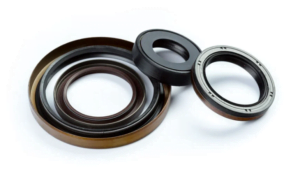
Seals and their manufacture: Although it is a cheap part -because they are manufactured in large quantities in a highly industrialized way-, their conception is not at all obvious or trivial. I show you a website of a manufacturer of oil seals, where explanations are given in great detail and very illustrative and didactic schemes: You can see this link (Sabó Retenes)
At the time when there were no oil seals as we know them today, one of the oil retention systems in the axles of many old cars was a piece at the end of the axle, which had been machined a spiral, as if it were a drill: When rotating, the spirals tended to “pull back” the oil that “wanted to get out” by pressure. In other words, like a grinder that was forcing the oil to re-enter the inner area of the engine (or transmission): in the same way that the twist of a drill bit expels the drilled material “backwards”. In this link you can see the axis of an MGA with the twisted spiral that I mention. You can see it on the right side of the image. By the way, besides the image itself, and the observation of it, the article in the link is very interesting.
One of the costraints or inconvinients of these systems is that they operate only while the engine is rotating. But when the engine stops, this “turbine effect” stops and for a few moments some oil may fall outside, even if there is a cover or supplement to prevent this from happening. It is inherent in the design.
Drain holes: In many classic cars this behavior was assumed so it’s common to have some oil drain holes to prevent the oil from accumulating in some areas adjacent to the leak – where it could cause problems – and therefore ensure that the oil is completely drained outside. A typical example is the rear output of the crankshaft or the input of the primary shaft of the gearbox. If oil comes out of one of the two places – from the engine or the transmission – the last thing we want is that it accumulate inside the gearbox bellhousing, since the clutch is located there and if the clutch disc is stained with oil, clutch will no longer work and will remain unusable. Therefore, oil must never be accumulated inside the unit so imperatively needs to be evacuated.
Here you can see it in detail:
I show you another example: Here is a 1956 Renault rear axle. You can see the hole drilled so the small oil leaks coming from the transmission -differential and gearbox, in this model the oil sump is common for both elements- comes out, and does not remain trapped inside, which if it happened, could cause oil to reach the brake area in the other side of the axle, which, for obvious reasons should not happen. You can see that in this hole there is also a small steel ring as a key to ensure that it does not clog (Renault 4CV, 1956).
Oil-collecting mat: In English classic cars (MG, Austin Healey, Jaguar) this situation is so common that there are suppliers that sell trays or mats to collect the oil under the car when it is parked.
What you see in the image below (on the right if you see it on a computer and below if you see it on a cell phone) is the “bell” of the gearbox of an MG: it has a small hole that is precisely to drain the oil coming out of the crankshaft, and prevent it from staining the clutch disc. This hole usually has a small plate (key) that, with its movement due to the vibration of the engine, prevents the hole from clogging and therefore could prevent the oil from escaping. You can see the general photo with the drainage hole on the right side of the photo (the drainage point is circled, click on the image).
What about the MOT inspection?
Well, as I said, the MOT inspection can be a problem. Please, note that the MOT technician has a procedure to follow. And in his/her procedure, if they inspect a vehicle which shows oil leak, they are obliged to issue an UNFAVORABLE/NON-PASSED report (regardless of their personal opinion, or no matter if they are are familiar with these types of cars and designs, which may or may not happen).
Possible options
Inspired by ideas that other users have put into practice, in some products that have become standard market ones for some models, and also in the engine low covers that come in modern cars, we have managed to solve the problem in a couple of vehicles with a solution as simple as collecting the oil in an integrated way in the vehicle, so avoid any dripping.
I invite you to watch part ii of this article .
I hope that our solution can help you and/or be useful for you as idea or starting point to elaborate your own one.

